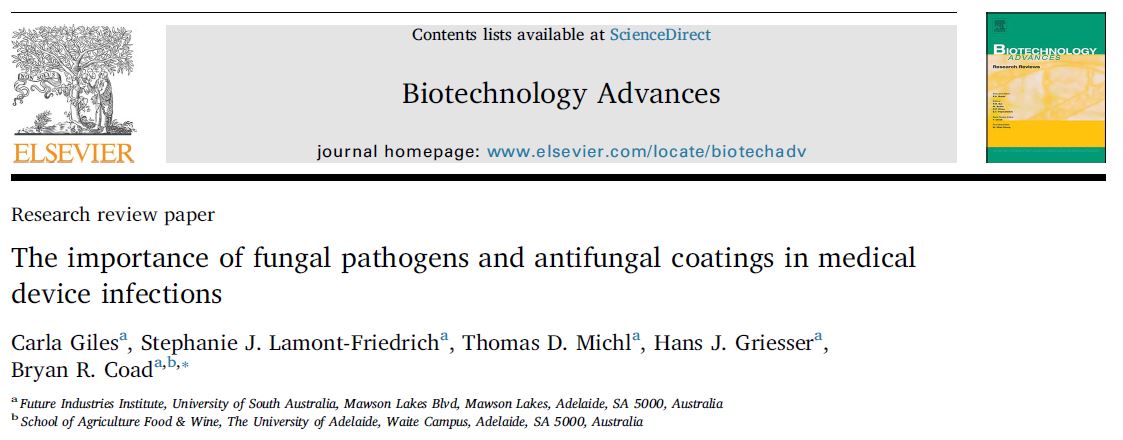How can we improve medical implants so that they combat microbial colonization and reduce the problem of implant-associated infections?
Basic science approaches for the design antimicrobial surfaces and coatings has been reviewed but it is clear that attention for fungal pathogens has been missing.
Fungal pathogens are important because they
- Are misunderstood and underdiagnosed.
- Severely affect immunocompromised and paediatric patients, and the elderly.
- Are difficult to combat because antifungal agents tend to be toxic to human cells.
We have published a new review entitled The Importance of Fungal Pathogens and Antifungal Coatings in Medical Device Infections.
https://www.sciencedirect.com/science/article/pii/S0734975017301520

The review article is online now. Click the image to go to the website.
Highlights include:
- Summary and evaluation of materials that release antifungal drugs and compounds.
- Evaluation of the spectre of antimicrobial resistance (AMR) for fungi.
- And provides critical discussion of the limitations in the field, with expert commentary on the future of the topic, as we see it, in the next five years, and then beyond.
This review is a significant addition to our 2014 review Biomaterials surfaces capable of resisting fungal attachment and biofilm formation. Biotech Adv. 2014; 32: 296-307.
This was a massive team effort that progressed over the course of one year. Our team of five authors wrote 17 pages of printed text and reviewed 89 references. This is the most comprehensive and up-to-date review in the field. We hope that the discussion on materials design will become an invaluable resource for researchers and feed into broader thinking about the wider field of design of antimicrobial biomaterials and polymicrobial biofilms.

Materials strategies for incorporating antifungals onto and into biomaterials.
